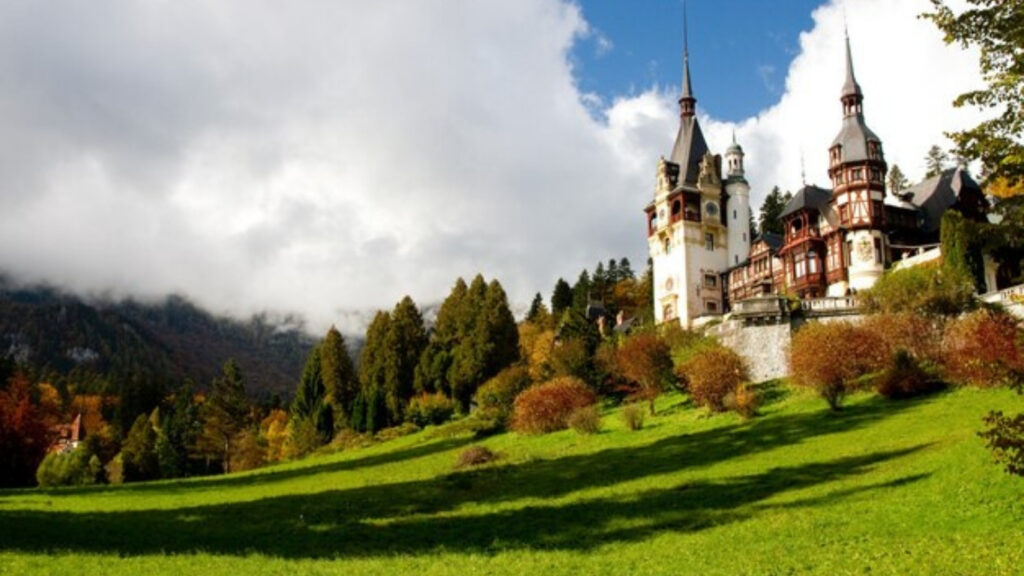🏰 Introduction to The Magnificent Art of Bavarian Castle Stucco
Step into the grand halls of a Bavarian castle, and you’ll be captivated—not just by towering spires and majestic murals—but by the elegant, sculptural beauty of The Magnificent Art of Bavarian Castle Stucco.
This decorative art form isn’t just eye candy; it’s a historical narrative, a testament to craftsmanship, and an enduring symbol of cultural prestige. In this article, we’ll uncover the rich legacy, meticulous techniques, and enduring allure behind the magnificent art of Bavarian castle stucco.
🕰️ A Brief History of Bavarian Stucco Art
Stucco in Bavaria can be traced back to the late Renaissance and Baroque periods (circa 16th–18th centuries). It flourished under princely courts and ecclesiastical patrons eager to project wealth, power, and spiritual devotion.
- Italian Influence: Italian stuccatori (stucco artisans) were often imported to execute complex designs.
- Bavarian Schools: Over time, local artisans developed distinct Bavarian styles—fusing Alpine motifs with religious iconography.
By the 18th century, stucco was more than decoration; it was architectural storytelling.
🌟 What Makes Bavarian Castle Stucco Unique?
Bavarian castle stucco stands out from other European styles due to:
- Floral Flourishes & Rococo Drama: Intricate garlands, scrolls, cherubs, and mythological scenes.
- Material Versatility: Lime-based plasters were mixed with marble dust for brilliance.
- Light Play: Relief designs played with natural and candlelight for dramatic effects.
- Local Symbolism: Heraldry, Bavarian folklore, and Christian motifs appeared often.
Unlike plain functional plaster, this was art with a purpose—to awe, inspire, and sometimes intimidate.
🛠 Techniques Behind the Masterpieces
Creating stucco in Bavarian castles was no small feat. The process combined artistry, engineering, and time-honored skill.
1. Framework Preparation: The Magnificent Art of Bavarian Castle Stucco
A wooden or masonry surface was prepped using a coarse plaster scratch coat.
2. Lime Plaster Application: The Magnificent Art of Bavarian Castle Stucco
Multiple thin layers were applied, allowing for flexibility in shaping.
3. Freehand & Molded Sculpting
Artisans used both molds and hand tools to create fine details—leaves, faces, and drapery.
4. Polishing and Gilding
Once hardened, the stucco was sometimes gilded with gold leaf or painted with mineral pigments.
Fun Fact: Some ceilings in Schloss Nymphenburg took over five years to complete due to their complexity.
🏯 Famous Castles Featuring Iconic Stucco
Several Bavarian castles are celebrated for their stucco interiors. If you’re planning a cultural visit, here are must-sees:
✔ Schloss Nymphenburg (Munich)
A baroque masterpiece. The Hall of Mirrors stuns with white stucco reliefs and golden trim.
✔ Schloss Neuschwanstein (Schwangau)
Known for its fairy-tale exterior, but inside? Romantic-era stucco scenes depicting Wagnerian operas.
✔ Schloss Schleissheim (Oberschleißheim)
This lesser-known gem features high Rococo ceilings with celestial-themed stucco.
These castles are living museums, preserving a form of craftsmanship that borders on the divine.
🧬 The Cultural Significance of Stucco in Bavaria
Stucco wasn’t just decoration—it conveyed status, theology, and local pride.
- Religious Power: Baroque stucco often illustrated Biblical scenes to reinforce faith.
- Royal Legitimacy: Stucco coats of arms and allegorical figures exalted dynastic lineage.
- Civic Identity: Many designs drew from Bavarian myths, customs, and nature.
In short, it’s a language in lime and gypsum.
🧱 Preserving a Vanishing Art Form
Today, Bavarian stucco faces threats from:
- Environmental decay
- Lack of skilled restorers
- Modern building materials
Fortunately, restoration initiatives are emerging. Institutions like the Bavarian State Office for the Preservation of Historical Monuments are training new generations in old techniques.
As expert restorer Dr. Helga Maier says:
“Restoring stucco isn’t just fixing the past—it’s preserving soul.”
✅ Conclusion: The Magnificent Art of Bavarian Castle Stucco
The magnificent art of Bavarian castle stucco is more than architectural flair—it’s a layered expression of history, artistry, and identity. From gilded cherubs to scrolling garlands, these works continue to whisper stories centuries after they were sculpted.
Whether you’re an architecture enthusiast, art historian, or a curious traveler, these creations offer a timeless look at what happens when craftsmanship meets culture.
📣 Call to Action: The Magnificent Art of Bavarian Castle Stucco
Inspired by the magic of Bavarian architecture?
Share this article, leave a comment, or subscribe for more deep dives into hidden art histories.
❓ FAQs about The Magnificent Art of Bavarian Castle Stucco
q. What is stucco in architecture?
A. Stucco is a type of decorative plaster used to coat walls or ceilings. In Bavarian castles, it often included intricate reliefs and symbolic figures.
q. Who were the famous stucco artists in Bavaria?
A. Notable names include Johann Baptist Zimmermann, Wessobrunn School artisans, and Cosmas Damian Asam, known for religious stucco work.
q. Is stucco still used today?
A. Yes, but mostly for exterior finishes. Traditional hand-crafted interior stucco is rare and often limited to restoration projects.
q. Why is Bavarian stucco so famous?
A. Its detail, symbolism, and integration with light and architecture make it one of Europe’s most refined decorative arts.






